Implementing Alternative Technical Concepts in Project Delivery Methods
The NCHRP 08-112 Guidebook focuses on implementing Alternative Technical Concepts (ATCs) to improve project quality, cost, and schedule certainty. It addresses key findings, challenges, and opportunities in utilizing ATCs, offering a working definition for effective implementation.
Download Presentation

Please find below an Image/Link to download the presentation.
The content on the website is provided AS IS for your information and personal use only. It may not be sold, licensed, or shared on other websites without obtaining consent from the author.If you encounter any issues during the download, it is possible that the publisher has removed the file from their server.
You are allowed to download the files provided on this website for personal or commercial use, subject to the condition that they are used lawfully. All files are the property of their respective owners.
The content on the website is provided AS IS for your information and personal use only. It may not be sold, licensed, or shared on other websites without obtaining consent from the author.
E N D
Presentation Transcript
NCHRP 08 NCHRP 08- -112: A Guidebook for Implementing A Guidebook for Implementing Alternative Technical Concepts into Alternative Technical Concepts into Project Delivery Methods Project Delivery Methods 112: Doug Gransberg, PhD, PE, DBIA Gransberg & Associates, Inc. Norman, OK dgransberg@gransberg.com NCHRP 08-112 ATC Guidebook 1
Setting the Stage - Presentation Agenda Introduction Key Findings ATC Working Definition Guide Outline NCHRP 08-112 ATC Guidebook 2
Research Team Steering Group Douglas D. Gransberg, PhD, PE Principal Investigator Co- Principal Investigators Michael C. Loulakis, Esq, DBIA Capital Project Strategies, LLC Debra R. Brisk, PE DRB Consulting, LLC Steven D. DeWitt, PE TIS, PLLC Keith Molenaar, PhD University of Colorado Ghada Gad, PhD Cal Poly Pomona Jorge Rueda-Benavides, PhD Auburn University Name Organization Name Organization Peter Davich Minnesota DOT Randy Hitt Missouri DOT Chris Youngs Michigan DOT Jim Hunt Atkins-Global John Carlson Sundt Construction NCHRP 08-112 ATC Guidebook 3
Key Findings The use of ATCs in ACM projects continues to furnish a mechanism to obtain early contractor design involvement with the goals: Improving the project s final technical quality, Improving both cost and schedule certainty. The use of ATCs is increasing. However, most of the growth remains in DB and P3 projects. NCHRP 08-112 ATC Guidebook 4
Key Findings The use of DBB ATCs has not been perceived as attractive by most DOTs. Primary technical issue is the time it takes to receive, evaluate, and approve proposed ATCs in a traditionally short procurement period. Primary risk issue is the assignment of design liability and complications added by only modifying individual features of work. Limited scope DBB ATCs where the allowable changes are restricted to temporary works and traffic control seem to provide the most potential for growth in this area. Opportunities during procurement to propose alternatives to the solicitation s scope has been expanded: Alternative financial concepts (AFC) in P3 Alternative configuration concepts (ACC) in DB. Pre-Approved Elements (PAE): utilities, geotechnical investigations, etc. NCHRP 08-112 ATC Guidebook 5
Proposed Working Definition Synthesizing the various definitions discussed above leads to a working definition for ATCs that satisfies the following tests: The alternative must modify a specific contract requirement in a manner that is not contemplated by the project s solicitation. It must be equal to or better than the baseline design as determined by the agency advertising the project in a verifiable manner. Incorporating the above tests into a single definition results in the following: An ATC is a proposed modification to a contract requirement in a manner that is equal to or better than the baseline articulated in the project s solicitation. NCHRP 08-112 ATC Guidebook 6
ATC Submittal Periods Project Delivery Period Design-Bid-Build Project Delivery Method Orientation Guidebook based on comparative approach. Assist in deciding whether to include ATCs Assist in PDM selection Includes actual experience where appropriate. On 6 Texas DOT DB and P3 projects: 341 ATCs worth $2.9 Billion were proposed 142 ATCs worth $1.1 billion were accepted 35 ATCs worth $210.8 million were implemented (Zapalac 2013) Design Advertise/Bid Award Build ATCs See Figure 1.6 Design-Build Design RFQ RFP Select Award Build ATCs See Figure 1.6 Progressive Design-Build Design RFQ Select Award Build ATCs/PTCs See Figure 1.6 Design CMGC/CMAR RFP Select Award Build ATCs/PTCs See Figure 1.6 Design P3 RFQ RFP Select Award Build Operate/Maintain ATCs See Figure 1.6 NCHRP 08-112 ATC Guidebook 7
Relates Actual DOT Experiences in the Field Lessons Learned Call-out Boxes Tables to compare alternatives DBB Milestone Missouri DOT Hurricane Deck Bridge Full Scope Process ATC Information Meeting Base design confirmation 30% Plans posted Start one-on-one meetings 60% plans posted Last day to submit ATCs ATC biddable plans to contractor Bids due PAE = Pre-Approved Element DB Milestone Minnesota DOT Hastings Bridge Full Scope Process - - RFP issued ATC submittal due PAE submittal due Clarification Submittal due Technical Proposal due Price proposal due Timing Timing Day 0 Day 21 Day 36 Day 39 Day 107 Day 165 Day 255 Day 350 - - Day 0 Day 60 Day 90 Day 104 Day 120 Day 145 NCHRP 08-112 ATC Guidebook 8
ATC Guidebook Outline Chapter 1 Introduction A Bold Approach Project Delivery Methods ATC Legal Matters Characteristics of ATC Delivery How to Use This Guide Chapter 2 ATC Procurement Considerations Conducting an Open and Transparent Procurement Maintaining Confidentiality Design Liability ATC Roles and Responsibilities Developing ATC Project Scope Chapter 3 Accounting for ATCs in Design Characteristics of an ATC Project Risk Analysis and Mitigation Scope Development Design Packaging NEPA/Permitting Constraints Chapter 4 Agency Review and Evaluation of ATCs ATC Review Process ATC Evaluation Process ATC Submittal Documentation ATC LDs and Incentives/Disincentives Clarifications/Modifications of Baseline Scope for Approved ATCs Amendments triggered by ATCs NCHRP 08-112 ATC Guidebook 9
ATC Guidebook Outline Chapter 5 Project Administration Incorporating ATCs from Unsuccessful Proposals Project Oversight/Inspection ATC Payment Provisions Change Orders on ATC Projects ATC Impact on QA Future for ATC Implementation Appendix A DB ATC Information Appendix B P3 ATC Information Appendix C DBB ATC Information Appendix D CMGC ATC Information Appendix E Example ATC Solicitation and Contract Clauses Nondisclosure agreements Example ATC RFP Clauses ATC and Differing Site Conditions Pre-Accepted Elements (PAE) Clause NCHRP 08-112 ATC Guidebook 10
Typical Project Delivery Method Appendix Flow chart Example CATC/ATC submittal form Example Evaluation Plan Conceptual Alternative Technical Concept Submittal Form General Description: A narrative that describes the proposed ATC in concept and includes the basic differences between the BTC and the ATC, the location where the ATC will be used on the project, and any design exceptions required by the ATC. Design-Build Project Proposer ATC Number Advantages and Disadvantages: A listing and brief description of the comparative advantages and disadvantages of the Conceptual ATC including: Effects on the service life, safety, durability, reliability, economy of operation, ease of maintenance; other factors significantly altered by the Conceptual ATC; and rationale for the proposed deviation(s) from the BTC. Impacts to Permits and/or Third-Party Agreements: A description of steps necessary to address existing permits, new permits, or third-party agreements that may be impacted or required in order to initiate the proposed Conceptual ATC. In addition, the Bidder shall describe its expectation of securing or modifying these documents; and the responsible party(s) and time frames required to implement such requirements. Identification of Prior Similar ATCs: If the Conceptual ATC has been used under comparable circumstances, provide details of other projects where it has been used under comparable circumstances, and the action taken by the relevant agency. Known Use or Testing: A description of any previous use or testing of the Conceptual ATC that is known to the Bidder, including the tester, the conditions, and the results. Identification of Interdependencies: A brief description of interdependent components of each ATC NCHRP 08-112 ATC Guidebook 11
Visual Content Maximized Risk Assessment Example ATC Evaluation Factors Project Development and Delivery Process - DB FACTOR TYPE FACTOR 30% DB Contract Award Proposed ATC complies with current project design criteria. ATC does not require a design deviation. Proposed ATC PAM matrix score is greater than or equal to the baseline PAM matrix score. Proposed ATC cost is less than the engineer s estimate for the modified feature of work. Proposed ATC schedule is less than the period specified in the solicitation. Proposed ATC costs more but has a lower life cycle cost. Proposed ATC cost savings are validated. Proposed ATC meets minimum net savings amount after re- design costs Proposed ATC reduces the period traffic is disrupted. Proposed ATC schedule savings are validated. Proposed ATC reduces the construction period for the modified feature of work. Proposed ATC changes to the baseline design criteria have been successfully used in another US agency. Proposed ATC reduces internal agency oversight costs. Baseline Design ATC Qualification DB 100% Design Construction Complete Design Phase DB RFP Issued Proposals Submitted Total Project Cost Unrecognized Cost (Unknown/ Unknowns) Equal To or Better Than Known but Unquantified Costs (Known/ Unknowns) Percentage of Total Project Cost Potential Cost Benefits (if permitted or required) Potential Schedule Benefits Acceptability and Attractiveness Known and Quantified Cost (Known/ Knowns) Key messages Project Plan & Concept ATC ATC ATC Design Modification Period Proposal Period Approval Period ATC CATC 1-on1 Meetings Begin ATC 1-on1 Meetings Begin ATCs from Nonwinning Proposals (if req d) Approval NCHRP 08-112 ATC Guidebook 12
Summary Draft Guide is in panel review. Next step is to vet the draft of the revised guide with two DOTs. Vetting #1 Experienced DOT Colorado, Ohio, Minnesota, or Washington State Vetting #2 DOT new to ATCs Alabama or Nebraska Developing an implementation toolkit to go along with the guide ATC project early identification tool ATC model contract clauses and risk mitigation tool Equal to or Better Than decision tool. Training material as needed. Project is on schedule - Final completion March 31, 2019 Welcome any feedback dgransberg@gransberg.com NCHRP 08-112 ATC Guidebook 13
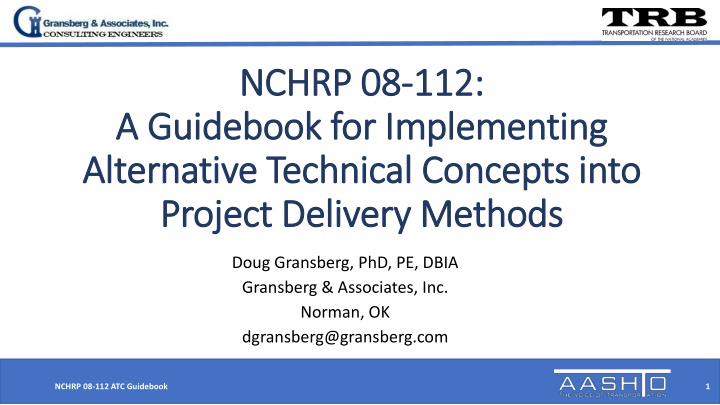



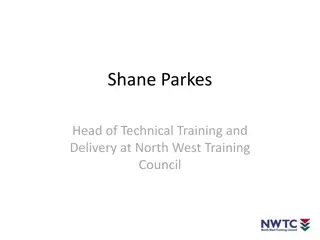


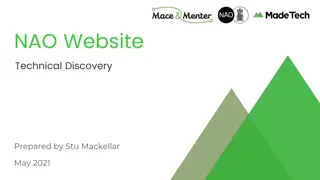
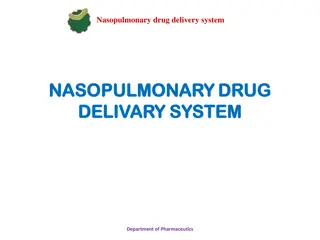
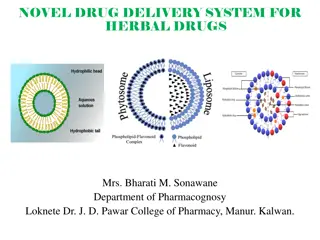

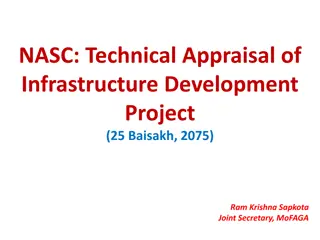
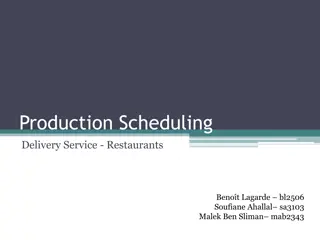
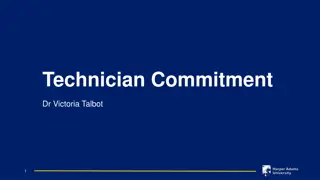
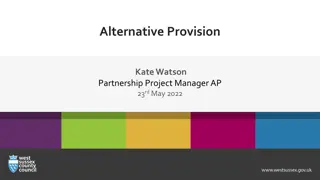


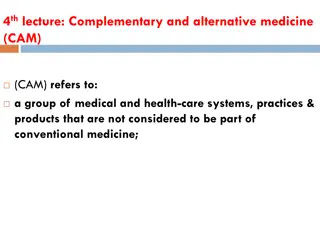
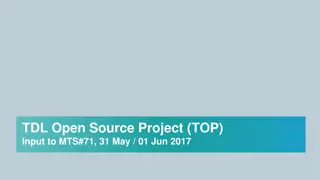
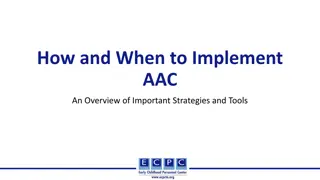
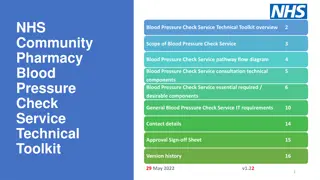
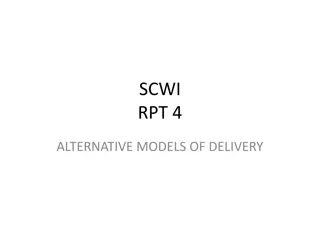
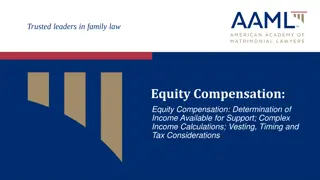
![Project Initiation Document for [Insert.Project.name] [Insert.Project.number]](/thumb/226757/project-initiation-document-for-insert-project-name-insert-project-number.jpg)